equipment reviews
iphone apps for a nature photographer
Although I have been using only Apple computers for the past 12 years, my smartphone was remaining Blackberry. When more and more people around me were getting iPhones, I was considering it as a hype in that wasn't feeling an urge to participate — first of all, because I hate to belong to mainstream. The second, and a probably more important, reason why I was sticking to Blackberry for so long was the keyboard. All professional smartphones made by RIM traditionally have a hardware keyboard that makes writing long notes and mails easy and quick while doing the same with a touchscreen is a real pain. Even now, when I use an iPhone, I can't stop hating on-screen keyboards. Because of that I didn't completely switch to iPhone yet and kept the Blackberry, too, although I am afraid that won't use it very often — because of two problems that RIM smartphones still have and that last month finally made me purchase an iPhone: 1) poor compatibility with Mac OS and Apple hardware; 2) limited choice of useful apps. I wish RIM would improve their native software and attract more developers of third-party applications soon. If they won't, the legendary brand Blackberry may disappear.
When I was setting up my new iPhone, I spent very much time researching the existing huge variety of applications and trying to find out which could be useful for me. This was not an easy task because in iTunes store no difference is made between apps for the iPhone's built-in camera ("iphonography") and those that are intended for photographers. In the category “Photo & Video” the second simply are lost under the huge mass of the first. Search appears to work only with keywords, and the returned results are unreliable and spammed. Currently, in German iTunes store — the one that Apple allows me to use — you can find a software only if you know at least part of its title. In the Internet, I found only one very short and old annotated list of iOS apps recommended for outdoor photographers by Outdoor Photographer magazine, and two other reviews in blogs — also outdated — for general photographers and videographers. A more comprehensive and focused on needs of nature photography overview of iPhone apps would have made my research and choice easier. Also it could save money because I finally purchased some apps that aren't as good as I expected: Beside already mentioned bad search, another very irritating thing with the iTunes Store is that you can't try out a programme before you buy. Of course, most iOS applications that Apple distributes cost very little but even if it is less than a dollar you can quickly spend many dollars and discover later that much of what you have bought is actually rubbish.
camera control
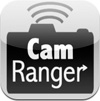
|
camranger
Camranger is a portable wi-fi router (made by D-Link) with a special firmware that give you full control over your camera at a distance of up to 50 m. Obviously, to use this app, you need to purchase the device that costs 299$ — but still much less than the wireless file exchange and camera control add-on offered by your camera manufacturer. Unlike these expensive alternatives that are usually bound to a certain camera model, Camranger has even wider range of features and works with most DSLR cameras. For the time of writing, there were Camranger apps for iOS and Mac OS, and an Android app was in development.
Having already used it in the field to control a camera remotely I noticed the following things that could be improved: 1) The display of live view image is very small. I had wished a possibility to zoom in and out or at least that it can be turned on a side when the iPhone is turned (just like in many other apps), and thus enlarged. 2) The app shows only the battery charge level of the camera, and not of the router, i.e. you never know how long the router will be running. Also the router itself has no indicators for that. When I was using this device, it happened many times that it suddenly went off because the battery was empty.
Of course, there is a general problem with use of iPhone outdoors: Its display is too dim, so that you see only very little when you are using it with Camranger. Therefore in sun light it is almost impossible to focus and even to set correct exposure parameters remotely with this device.
|
 |
triggertrap
Trigger Trap is an app for remote (for the time of writing wired only) triggering of a camera via iPhone. Also in this case, a small device is needed that connects the iPhone to the camera. Though it doesn't appear to me as an alternative of a real camera trap hardware, Trigger Trap may do a good job in situations when you need automatic triggering but have no specialised equipment. It provides functions for quite sophisticated setups, such as for interval and event driven triggering. If you have an iPhone and can live without full control of the camera via wireless connection — i.e. if you mainly shoot timelapse footages, for instance Trigger Trap for only 30$ is absolutely worth to consider.
|
paperwork aid
Nature photographers, if at all, then only rarely would need this. If you at least occasionally photograph people or their property, you may find property and model release apps in your iPhone very useful. Normally, I avoid photographing people, buildings and other civilisation artefacts, but even I can imagine situations when I would appreciate this app. Most agencies, magazines, publishing houses and other companies working in imaging business, particularly in the US, are extremely fussy when it concerns identity and property rights. Everyone who does business with them has to provide an agreement of every person who appears in a photograph that it will be published. Even if it is a building or someones cat or dog, the owner has to sign an agreement — so-called “property release” — for the photograph to be published. If you are lucky not to work with such agencies and companies this shouldn't bother you. But who knows? Maybe one day such a company would wish to purchase you photograph. Then it should be wise to have a signed release document.
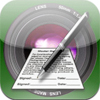
|
easy release
Easy Release makes it possible to have all model and property release management in your pocket. It may look strange because it is easy to fake a digital document, but even the world's biggest imaging agencies, such as Getty Images, accept releases in form of digital pages, signed on screen. From three such apps that I found for iOS, I liked Easy Release more.
|
 |
photographer's contract maker
This is an alternative to the above mentioned Easy Release app that costs a third of the price and allows editing and management not only of model and property releases but also of contracts and invoices. It uses templates which the user can customise. Personally, I liked the user interface and the technical design of Easy Release more, and I don't think I would ever need to edit contracts and invoices on the iPhone — I have enough computers for that. For every extension of this programme, such as extended customisation of templates, you have to pay a little more. Therefore, in reality, the price difference won't be so big.
|
 |
model release
Just like Easy Release this software is both — for model and for property releases. For the time or writing, it was priced at 5$. Like Easy Release, it has a nice user interface, and you get a release agreement signed directly on your iPhone. If you like this app and want to save 5 bucks that you otherwise would pay for the more expensive alternative, you may consider Model Release.
|
shooting planning

|
shotlist assist
Shotlist Assist is a notepad and pocket organiser of a photographer. As most such programmes, it is intended not for nature photographers but more for those who photograph models or objects for commercials. However, its concept makes a limited use of this app for outdoor photography possible. With Shotlist Assist you can plan your shooting sessions — timing, lighting setup, use of equipment, etc. Of course, you can't plan everything in all details if your “model” is a wild animal, but this app can nevertheless be useful for some rough planning — for instance: what equipment to take, when and where to go, or, if you'll be using artificial light — where to place strobes or reflectors. Writing your plan down to Shotlist Assist, helps to keep your work documented for the case if you would need to repeat the same shooting or to remember how a certain image was shot.
|
 |
strobox
This app is made with similar idea as Shotlist Assist but reduced to planning of lighting setup only. Since Strobox is distributed for free, there is nothing to complain about. However, its use for a nature photographer is even more limited due to the fact that the lighting setup diagrams don't have a symbol for a natural light source, hence you can't depict a shooting situation with natural light. Maybe in next releases a sun symbol like in Shotlist Assist will be added. Therefore, you'll do nothing wrong if you install this app and look if it meats your needs.
|
 |
slr
With this app you not only plan you lighting setup but also visualise it. Again, this software is initially supposed to be used for studio photography, and its use for planning of outdoor lighting is limited. However, it may be good for learning to choose and to position various light sources.
|
location scouting
Although nature photographers usually have no time to explore a location prior to shooting, it should be at least attempted. Always when I plan a itinerary of my trips I reseve at least 2 full days for each place. After I have arrived there, I walk or drive around and look for best shooting locations. Often I don't take all my equipment with me — but only one camera and one or two lenses. Now I even wouldn't need them — when I have such apps for the iPhone. The only problem with iPhone as viewfinder is that the focal length of its lens is limited to 34 mm. Longer focal lengths are simulated by the app, but to view the scenery like it would appear in an image taken with wider lens than 34 mm, you need an accessory — an add-on lens that connects to the iPhone. Of course, this will make the use of iPhone less convenient and reduce the sense of using it instead of the real camera. If you wouldn't use an add-on lens, such apps will show you only the image captured at focal length of the iPhone surrounded with empty field that corresponds to the rest of the image that a wider lens would capture. This should be enough for frame composition.
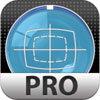
|
viewfinder pro
This app costs 20$ and is quite expensive, compared to most iOS programmes, although not too expensive, if measured at usual prices for computer software. However, in my opinion, the value of this app is a bit exaggerated and it is overpriced. Having used it for some time already and compared with other great iPhone apps, I mean that 10$ could be a more appropriate price. Overall Viewfinder is probably the best viewfinder and frame composition app for iOS intended for photographers. It is available in 4 different versions. Besides Viewfinder Pro there are Basic, Cinema, and ALPA. The developers of this app went so far that ALPA officially accepts iPhone with Viewfinder Pro or Viewfinder ALPA installed as a real viewfinder for their cameras.
|
 |
viewfinder basic
It is almost the same as Viewfinder Pro described above but costs 12$ instead of 20$. Compared to the Pro this app doesn't use “real”, i.e. obtained from manufacturers, information about lenses but calculates the frame according to formal technical data of lenses that are stored in its database. I don't know what consequences it has for accuracy of frame display — however, I'd suppose that not very big.
|
 |
artemis director's viewfinder
Another “expensive” app, but a nice too. I haven't tried it out because of the problem that I mentioned at the beginning of that review — absence of trial versions in Apple Store. Since videography isn't my main field of interest, I preferred software developed for still photography. If you are a cinematographer or videographer, you should take a closer look at Artemis Director's Viewfinder. The strength of this app is in composition of frames produced by professional cinema cameras although it works great for DSLR.
|
 |
focal finder
The cheapest among frame composer apps, but almost as good as the much more expensive alternatives mentioned above. Unlike the viewfinders that include a camera and lens database, Focal Finder lets you create you own camera and lens setups by giving in sensor size and focal length.
|
 |
frame composer
This app is similar to Focal Finder. The most obvious difference is the use of iPhone's gyroscope for automatic level detection: While you are turning the iPhone over this programme keeps the picture straight. I doubt, however, that this feature is so important that it should make someone prefer this app.
|
 |
lens pick
Lens Pick does basically the same as the other frame composer apps but with more focus on choosing a suitable lens for a given scenery. It is the most simple to use among the frame composer apps: You point the iPhone camera on a subject and select a number with a dialer. The programme simulates the image produced at the given focal length. Of course, since iPhone's focal length is only around 34 mm, you won't be able to see a complete frame wider than this. For the time of writing, iPhone 5 wasn't supported by this app. Therefore, Lens Pick wasn't an option for me.
|
lighting planning
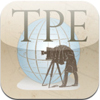
|
the photographer's ephemeris
This is probably the best known and most popular iOS application for sun and moon position calculation. Enter geographic coordinates or select a point on a map, then enter date and time, and TPE will display the sun an moon position at this place. You can quickly change the time and date setting and see how the light direction of moon and sun changes. Simply taking coordinates of waypoints that were set in Google Earth or Google Maps gives bad results: The location that you'll see in TPE will be wrong. A much better way is to import waypoints from a KML or KMZ file that you create in your computer — but with other software than Google Earth! Of course, you can also export waypoints that you set in TPE to a KML file. Unfortunately, this app needs an Internet connection to load map and sun/moon position data. Therefore, calculations for all locations you are interested in have to be done in advance — while your iPhone is connected to Internet. TPE stores then the maps that you have used and the corresponding sun/moon calculations. Another very nice and useful function that TPE offers is calculation of shadow length and direction. However, for nature photography the results would be more reliable for objects on a plain. In places with more complex geological relief, shadows often are too much influenced by hills, gorges, or mountains.
|
 |
lighttrac
Most functions of this app are similar to The Photographer's Ephemeris but it is much cheaper. In some aspects LightTrac is even more advanced. For instance, it searches and shows a location for a given address. Also the display of shadow lengths is more clear. In my opinion, its user interface is a little easier to use. However, although it can save a list of locations, LightTrac appears to be completely based on online maps search and doesn't store the snapshots for offline use. Overall, this is a great app for an outdoor photographer who doesn't leave civilisation while TPE could be more suitable for those who go to remote places.
|
 |
golden hour
Golden Hour is probably the simplest sun position calculator. Although it does the same as both other calculators described above, this app is based around the idea of a "golden hour" — time of the day when the light is commonly considered to be the best for landscape photography. The goal of it is to simplify determining this time in every place of the world. For me, it is a much too simplistic approach to lighting in photography. Instead I prefer the ability to determine the light at any moment that the other two programmes give me.
|
multitools
Like with any kind of kit, photographic “multipurpose” apps, i.e. those that offer a number of calculations, are often not as good as an app dedicated to only one kind of calculation. There are some such tools that are not bad, but you always would find in this large variety of separate calculators an app that does the job better or has a nicer user interface.
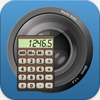
|
photo aide
In my opinion this is the best multitool app for photographers: It does all types of calculations a photographer may find useful — for free. It calculates exposure parameters (ISO, shutter speed, aperture, exposure value), flash settings, field and angle of view, hyperfocal distance, depth of field. The user interface is very clear and convenient. It has a large database of lenses, cameras and flashes. Some exotic flashes, like my Novoflex, are missing, but you can add your own custom flash to the database. I recommend everyone looking for a photographic calculator app to start with trying Photo Aide.
|
 |
hyperfocal
This app actually has the name Iperfocale — which appears under the icon when you have installed it. This was one of the first calculator apps I found. I didn't know about Photo Aide by that time, and Iperfocale appeared to me to be better than many other cheap calculator apps although not as good as some more expensive. Now I consider even those 0.89 € that I paid for it as bad investment. After I got Photo Aide and DoF Viewer (see. above) I don't use Iperfocale any more. It is more primitive than Photo Aide in many aspects: It has no lens database and lets you choose only the focal length from a list while the shortest is 10 mm and the longest is 500 mm. As a consequence, you can't calculate anything for circular fisheye lenses or for super telephoto lenses longer than 500 mm. When I tried to calculate depth of field and hyperfocal distance for 15 mm diagonal fisheye lens, I got wrong values — probably because this app doesn't know anything about other specifications of the lens, such as angle of view or minimal focusing distance. Also the number of calculations is limited to hyperfocal distance, depth of view, flash settings. As an extra, Iperfocale calculates frame number and interval for timelapse videos. Another disadvantage of this programme is that it doesn't store your gear setups: Every time you have to set frame size and focal length again when you need to calculate values for a different lens and camera combination.
|
 |
photo buddy
This appears to be a very popular multitool app although there are opinions that it is buggy. It calculates sun and moon position, depth of field, hyperfocal distance, exposure, diffraction, flash settings, distance, etc. Overall it is very versatile, and, if it works well, good value for little money — only $1.99. In my opinion, a separate app for each calculation is always better, however, if you are looking for a multitool and want to have some more features than in free app Photo Aide, you may try Photo Buddy.
|
dslr videography
Since videography isn't my speciality and I do it rarely, I don't need any apps dedicated to this field — particularly, if they aren't free. When I was searching for photography apps, I came across some programmes which are intended for videographers.
 |
toland asc digital assistant
This app is named after Greg Toland, a famous cinematographer, and was developed in cooperation with American Society of Cinematographers (ASC). Compared to most iOS programmes, this app costs quite much — $40. Since, as usually, there is no trial version, I can't build my own opinion about it other than only through drawing conclusions from its description. It looks like Toland ASC Digital Assistant does the same calculations as much cheaper or free apps for photographers but with user interface designed for cinematographers. Hence, if you are one of them and used to operate with the metaphors Toland ASC Digital Assistant uses, you may be interested in this software.
|
 |
dslr filmmaker toolkit
DSLR Filmmaker Toolkit is a cheaper but still quite pricy compared to typical iOS apps multitool app for videographers. It may be not that professional as Toland ASC Digital Assistant discussed above but has some additional functions useful for videographers, such as timelapse calculator and viewfinder. Compared to similar multitool apps for photographers, it offers a shot log recording and a slate. The latter looks like a toy and I doubt that a serious filmmaker would need this function on iPhone. Since I haven't used this app myself, I don't want to criticise it here. It may be a great piece of software, but personally, if I were a filmmaker, Toland ASC Digital Assistant would have been my choice.
|
 |
kodak cinema tools
This is the cheapest collection of utilities for videographers and cinematographers — because it costs nothing. Since this app is supposed to be used by those filmmakers who are still using cinematographic film, it has some nice features that may be useful even for photographers, such as a depth of field calculator, sun position calculator, glossary of terms. I don't use Kodak Cinema Tools often but have it in my iPhone.
|
depth-of-field calculators
Knowing the depth of field (DoF) was never important to me. First, all cameras that I have used in the last five years or so had a button for DoF preview. If you pushed it, the aperture blades of the lens close, and you see the same picture that will be recorded after you pushed the release button. Second, thanks to digital photography you can shoot an image and immediately inspect it on the screen of your camera and, if not satisfied with depth of field, re-shoot. Okay, you should have time for it. If you are a wildlife photographer, usually you won't — but neither you will have time to use a calculator. The best is to learn your equipment and to gather experience so that sooner or later you will be able to roughly recognise the depth of field without calculating it.
If you still would like to use a DoF calculator, there are dozens of them for iPhone. It looks like for an iOS software developer making a DoF calculator is just the next step after writing a "Hello World!" code. Surprisingly few such apps are free.
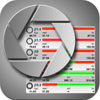
|
dof viewer
DoF Viewer is the only depth of field calculator app I liked. It costs $1.99 — more than the usual price for an iOS but less than some other DoF calculators.
|
 |
fieldtools
Probably the easiest to use and free depth-of-field calculator. It may be the first choice for someone who insists on not paying for an app with such a limited use.
|
 |
depth of field calculator
Also a very basic depth-of-field calculator, but sold for 99 cent.
|
 |
f-8
This is a more expensive ($3.99) and more feature rich programme that is doing all the same — calculating the depth of field.
|

 |
true dof and true dof pro
|
 |
lens lab
|
 |
advanced dof
|
 |
dof calculator & camera db
|
 |
hyperfocal calculator
|
 |
simple dof
|
 |
dof master
|
 |
idof
|
exposure calculators
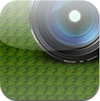
|
long time exposure calculator
|
 |
flash it right
|

 |
optimum cs and optimum cs pro
|
 |
exposure calculator
|
 |
xposure
|
timelapse videography
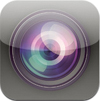
|
timelapse helper
A simple to use and very nicely realised application that lets you calculate the interval and the number of frames for a timelapse footage. And this all is for free!
|
 |
timelapse calculator
It has an appearance similar to mathematical calculator and does the same as the above mentioned Timelapse Helper app, but costs 99¢.
|
online publishing and social networking
 |
flickr
|
 |
behance
|
 |
photo bucket
|
 |
500px
|
 |
pinterest
|
 |
facebook
|
 |
twitter
|
 |
google+
|
 |
linkedin
|
 |
tumblr
|
 |
wordpress
|
 |
inaturalist
|
 |
project noah
|
 |
blogger
|
 |
smugmug
|
file management and exchange
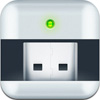
|
air drive
This is a fantastic piece of software. If someone had told me 5 years ago that this were possible, I wouldn't have believed it.
Air Drive turns your iPhone into a HTTP and FTP server — automatically, in any network. Just open the Air Drive programme and set the virtual switch in position "on". It will show the HTTP and FTP connection addresses of your iPhone in the current network. On other computer, that you want to connect to the iPhone, type the address in a web browser or an FTP client, and it will immediately connect. After that you will be able to upload files from your computer to the iPhone or download them from the iPhone to the computer. Of course, it works with any computer and any operating system.
|

|
documents by readdle
All you need to work with files on your iPhone. With this app you can access your PDF, video, audio and image files just like in Finder or Windows Explorer. You can open those files in place — playback or read, and if it is a text document, even annotate it. The files can be exchanged with other computers or smartphones via cloud drives, such as Dropbox or iCloud.
|
 |
drop box
If you use Drop Box as alternative or in addition to iCloud, this app is for you. It is a very well working and easy to use Drop Box client for iOS. It integrates with other apps, such as Documents mentioned above. I don't use Drop Box for my own purposes but sometimes I need to exchange files with other people who use this service. This app works great in such cases.
|
useful utilities for imaging professionals
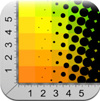
|
print calc
This simple programme lets you calculate in an easy way the optimum parameters for inkjet printing — such as image resolution for a given paper size. Of course, you can do it with any calculator or even using a pen and a piece of paper but Print Calc makes it for you quicker and more convenient. This app may be useful not only for someone who like me prints himself but also for those people who order prints of own images in firms offering printing services.
|

|
color chooser
This is the best color calculator and picker software for iPhone that I have found so far. This app lets you choose a colour either from a colour wheel, or from a palette, or from a stored colour combination and see its presentation as RGB, CMYK, or hexadecimal code. You can even pick a colour from an image that you have captured with the built-in camera or loaded to the iPhone. You can also define and save your selections as palettes. This app is really good — and though it is free, it is doesn't show any ads.
|
 |
color picker pro
This is a paid counterpart of Color Chooser described above. It does almost the same and is also nice to use but costs $1.99 — not much, but why to pay if there is a free alternative with the same functions. I also like the user interface of Color Chooser more than of this app.
|
 |
saturate
This app does the opposite to both colour picker programmes mentioned above: It visualises the colour that you set through input of RGB, or CMYK, or hexadecimal values. Saturate may be particularly useful for Web designers and other professionals who need a quick help in determining colours that certain numeric input values will produce on screen. This app was also absolutely free when I got it, and also unlike so many free iOS apps didn't deliver those annoying ads.
|
 |
easy measure
A funny app that measures the size of anything your iPhone camera is capturing. However, I have yet to check if its measurements are correct, to be able to recommend it. The process of measuring looks like this: You aim the camera of your iPhone at an object and take a photo of it. You have to put in the distance to the object, and the programme calculates its size. I assume that it uses the focal length of the iPhone lens, the size of the picture produced, and the distance to the object. With these 3 values it is possible to calculate the approximate size. The free version of this app continuously shows stupid advertising banners that are disturbing because they take space on the already small iPhone screen. Therefore, I would recommend to pay if this app indeed works for you.
|
April, 2013


































































